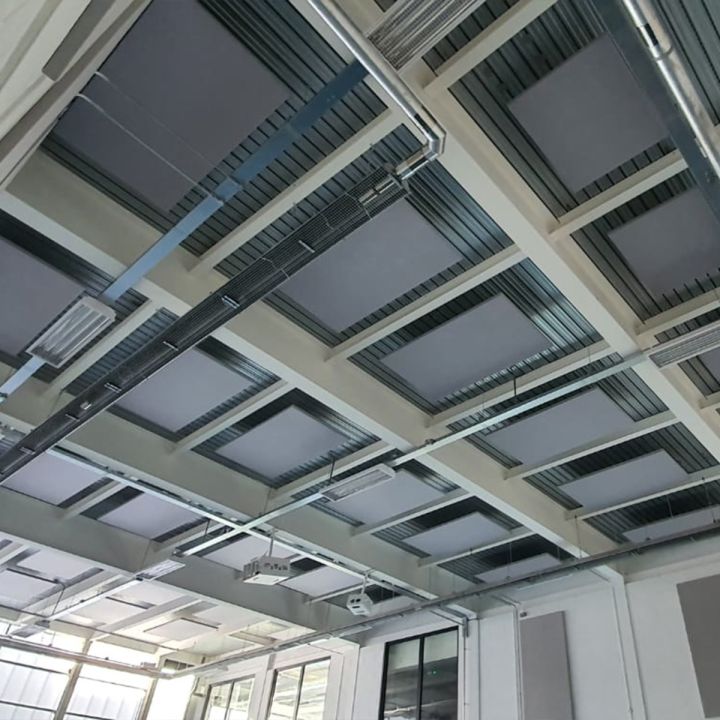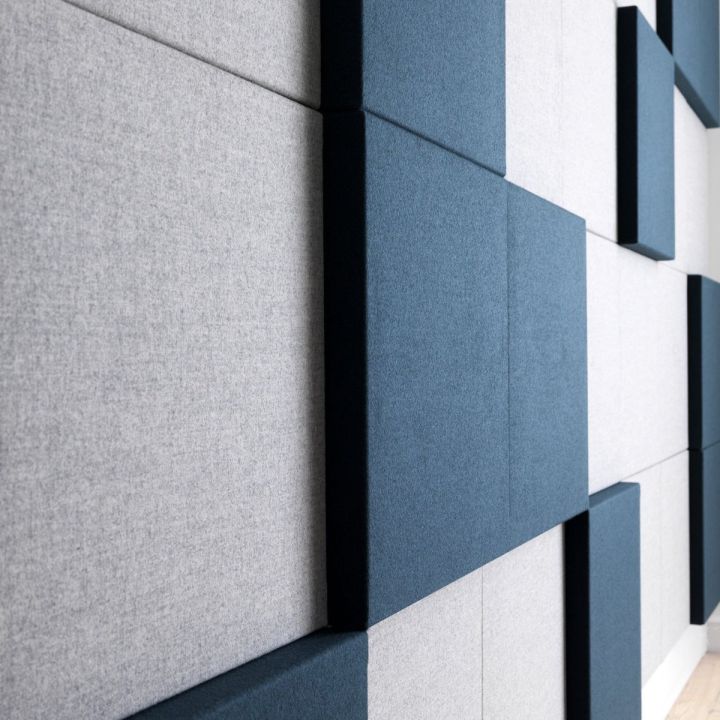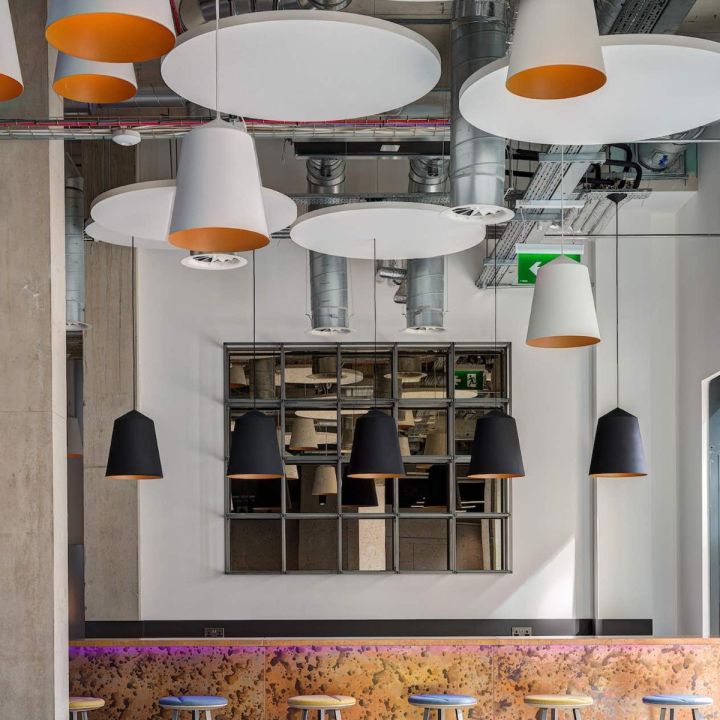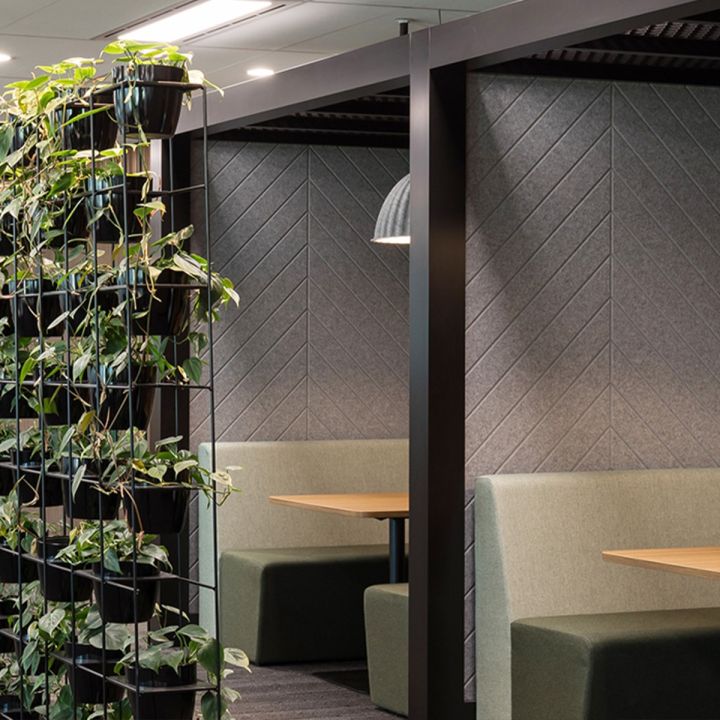
Importance of Acoustic Panels in Office Design
Importance of Acoustic Panels in Office Design
Acoustic panels are an essential component of office design, as they help to reduce noise pollution and create a more comfortable and productive work environment. Noise pollution in the office can be a big problem, causing negative impacts to the business’ performance.
This is especially true in open-plan offices, where the lack of sound barriers can make it difficult for employees to concentrate and communicate effectively. Acoustics are also an important design consideration in meeting rooms where video or audio conferencing is being conducted.
The use of acoustic panels in office design can also have a positive impact on employee health and well-being. Excessive noise can lead to stress and fatigue, which can negatively affect employee morale and productivity. By reducing noise pollution, acoustic panels can help to create a more comfortable and productive work environment, which can lead to improved employee satisfaction and retention.
Types of Acoustic Panels Available
Acoustic panels are designed to address this problem by absorbing or blocking unwanted noise. They come in a variety of forms, materials and designs and can be used to improve the overall acoustics of an office. In this blog post, we will be exploring the different types of acoustic panels available on the market, their features and benefits, and how to choose the right one for your office space. To learn more about the most common acoustic panels for office, check our our article on the Top 6 Acoustic Treatments for Offices
Sound-Absorbing Panels
How Sound-Absorbing Panels Work
Sound-absorbing panels are designed to absorb and reduce unwanted noise in a room. They are typically made from materials such as fiberglass or mineral wool and can be mounted on walls or ceilings. They are particularly effective at reducing echo and reverberation, making it easier for employees to hear and understand each other in open-plan offices. The sound-absorbing panels work by converting the sound energy into heat energy, which is then dissipated into the air.
Benefits and Applications
Sound-absorbing panels are an ideal solution for open-plan offices, meeting rooms, and other common areas. They can also be used in private offices to reduce the noise transmission from outside. The panels come in a variety of sizes, shapes, and colors, making it easy to find one that fits the aesthetics of your office space. They are also relatively easy to install, and can be mounted directly onto walls or ceilings using special brackets.
Echo and Reverberation Control
Sound-absorbing panels are also a great option for office spaces that are prone to echo and reverberation. They can be used to control the sound level in the room and improve speech intelligibility. With the right placement, sound-absorbing panels can significantly reduce background noise and create a more comfortable and productive work environment.
Sound-Blocking Panels
How Sound-Blocking Panels Work
Sound-blocking panels are a slightly different beast - they are designed to block or reduce the transmission of sound between different rooms or spaces. These panels are typically made from denser materials, such as mass-loaded vinyl or cork, or heavy plaster and can be installed in walls, ceilings, or floors. They work by adding mass to the partition, making it more difficult for sound to pass through.

Sound Blocking Panels are not designed as an aesthetic solution
Benefits and Applications
Sound-blocking panels are particularly useful in situations where privacy or confidentiality is important, such as in conference rooms or private offices. They can also be used to reduce noise transmission between different floors or in spaces where sound isolation is crucial, such as recording studios or research labs. These panels come in various thickness and materials, and can be customized to match the aesthetic of the office.
Sound Transmission Class (STC)
The performance of sound-blocking panels can be measured by their Sound Transmission Class (STC) rating. The higher the STC rating, the better the panel is at blocking sound. It is important to note that sound-blocking panels work best when paired with sound-absorbing panels. The combination of sound-blocking and sound-absorbing panels can significantly reduce noise transmission, improve speech intelligibility and create a more comfortable and productive work environment.
Acoustic Wall Coverings and Acoustic Art Panels
How Acoustic Wall Coverings and Art Panels Work
Acoustic wall coverings and art panels not only provide sound absorption but also add an aesthetic element to the office space. These options can be customized to match the office design and branding. They are typically made from materials such as fabric or perforated metal and can be mounted on walls or ceilings. They work by absorbing sound waves and reducing echo and reverberation in the room.

Acoustic panels can be art!
Benefits and Applications
Acoustic wall coverings and art panels can be used in a variety of spaces, including conference rooms, private offices, and common areas. They can be used to improve the acoustics of a space and create a more comfortable and productive work environment. They also serve as a decorative element, adding a unique and visually appealing aspect to the office design.
Customization
Acoustic wall coverings and art panels come in a variety of designs, colors, and materials, making it easy to find one that complements the design of your office. They can also be customized with company logos, patterns, or images, which can be a great way to enhance the brand identity of an office. Additionally, these panels can be used to highlight specific areas of an office or create a focal point in a room.
Acoustic Ceiling Panels - also known as Acoustic Rafts
How they work
Acoustic rafts, also known as suspended acoustic panels, are a type of sound-absorbing panel that are designed to improve the acoustics of a space by reducing echo and reverberation. They work by absorbing sound waves, which helps to reduce the amount of sound that bounces around the room.
Benefits and Applications
They are suspended from the ceiling using special brackets or cables, and are placed in areas where sound issues are most prevalent, such as near common areas or high-traffic areas.
Acoustic rafts are typically made from materials that are specifically designed to absorb sound, such as fiberglass, rock wool, or perforated metal. They are suspended from the ceiling using special brackets or cables, and are placed in areas where sound is most prevalent, such as near common areas or high-traffic areas.
The effectiveness of acoustic rafts is measured by their Noise Reduction Coefficient (NRC) rating, which ranges from 0 to 1. The higher the NRC rating, the more sound the panel can absorb. The panels with high NRC rating are more effective in reducing echo and reverb in the room.
Choosing the Right Acoustic Panels for Your Office
Factors to Consider
When choosing acoustic panels for your office, it's important to consider the specific needs of your space and employees. Factors such as the size of the room, the type of activities that take place there, and the overall design aesthetic of the office should all be taken into account. Additionally, it's important to consider the STC rating of sound-blocking panels and NRC rating of sound-absorbing panels to ensure that the panel is suitable for the intended use.
Consulting with an Expert
It's also a good idea to consult with an acoustic expert or interior designer to ensure that you are selecting the right type of panel for your space. An expert can help to determine the specific requirements of your office, such as the level of sound reduction needed, and can provide guidance on the best type of panel for your needs. They can also help with the placement and installation of the panels, ensuring that they are installed in the most effective locations.

Get it right the first time!
Budget
Lastly, it's important to consider the budget when selecting acoustic panels. There are a wide range of options available, with varying price points. It's important to find a balance between cost and performance, and to select a panel that provides the desired level of sound reduction while fitting within the budget.
Installation and Maintenance
Installation Options
There are several options available for installing acoustic panels. Some panels can be mounted directly to the walls or ceilings, while others can be hung using special brackets or suspended from the ceiling. The location of the panels is also important, as they should be placed in areas where noise is most prevalent, such as near common areas or high-traffic areas. It's important to ensure that the panels are installed properly to ensure maximum effectiveness.
Maintenance
Acoustic panels are relatively easy to maintain and can be cleaned with a damp cloth and mild detergent. They are also durable and long-lasting, making them a great investment for any office. It's important to regularly check the panels and ensure that they are still functioning properly and that there is no damage.
Upgrades or additional panels
Additionally, it's also possible to upgrade the existing sound-absorbing or sound-blocking panels to improve the acoustic performance of a space. This can be done by adding more panels to a space, or by replacing the existing panels with new, higher-performance ones. It's important to consult with an expert when considering an upgrade, to ensure that the new panels will be suitable for the space and will provide the desired level of sound reduction.
Conclusion
- Acoustic panels are essential for reducing noise pollution and creating a comfortable and productive work environment in offices.
- There are several types of acoustic panels available, including sound-absorbing, sound-blocking, acoustic wall coverings and acoustic art panels.
- Sound-absorbing panels are effective at reducing echo and reverberation, while sound-blocking panels are useful for increasing privacy and confidentiality.
- Acoustic wall coverings and art panels not only provide sound absorption but also add an aesthetic element to the office space.
- Choosing the right acoustic panels for an office involves considering factors such as room size, activity type, design aesthetic, budget and consulting with experts.
- Proper installation and maintenance of the acoustic panels is crucial to achieving the desired level of sound reduction and to ensure their longevity.
- Upgrades can also be done to improve the acoustic performance of a space.
In summary, acoustic panels play a vital role in office design, they not only enhance the acoustics of the space but also improve the overall atmosphere and employee satisfaction. It's important to choose the right type of panel, consult with experts and ensure proper installation and maintenance for achieving the best results.













